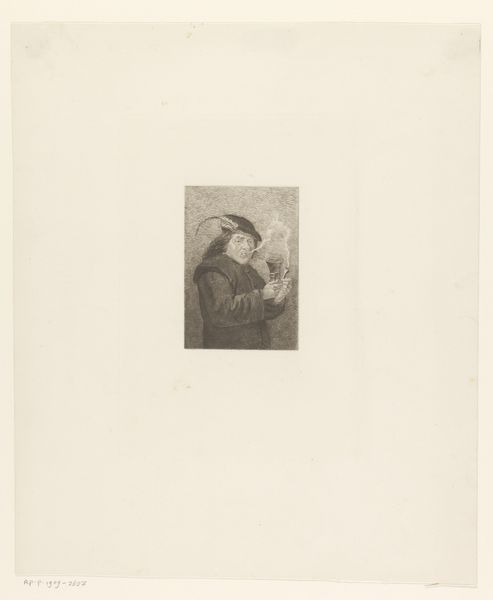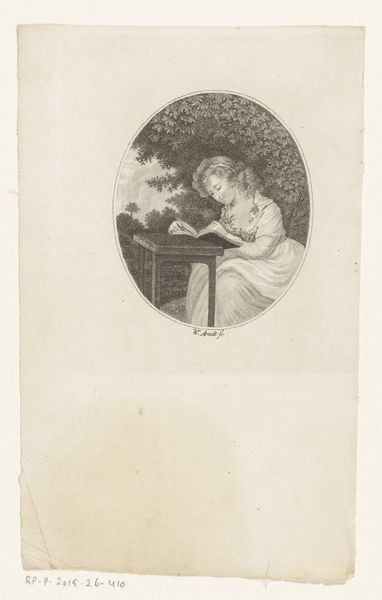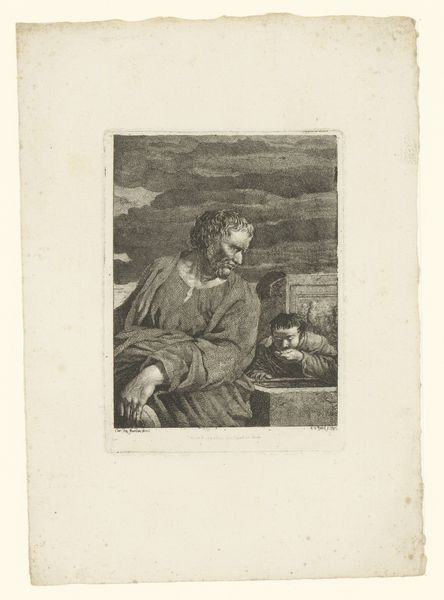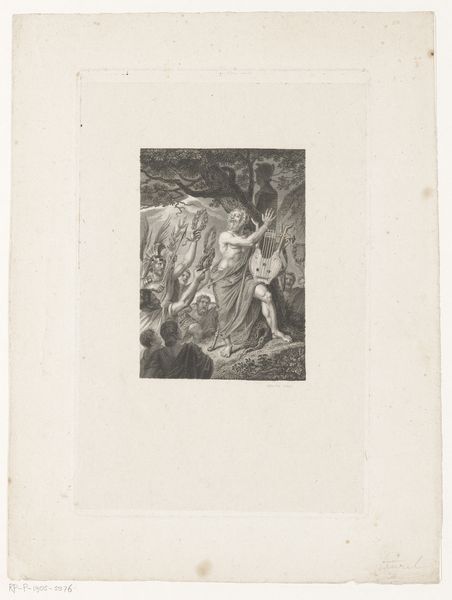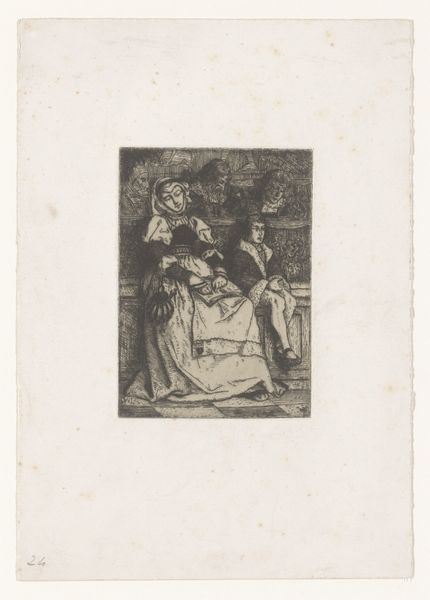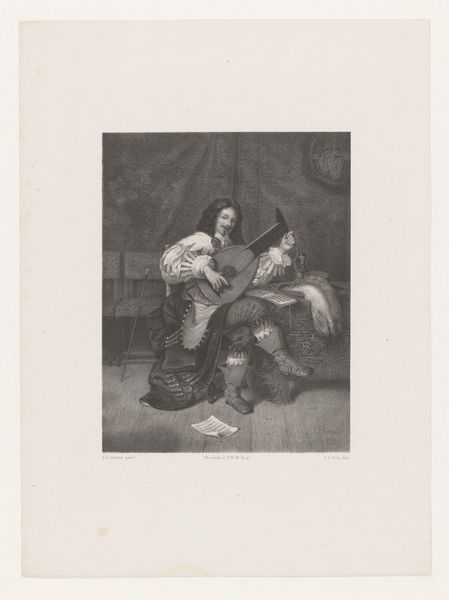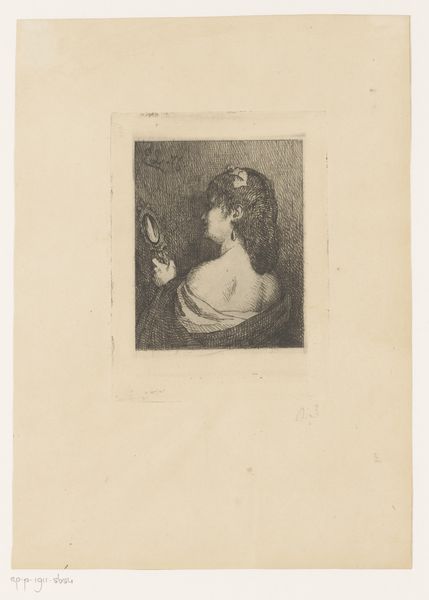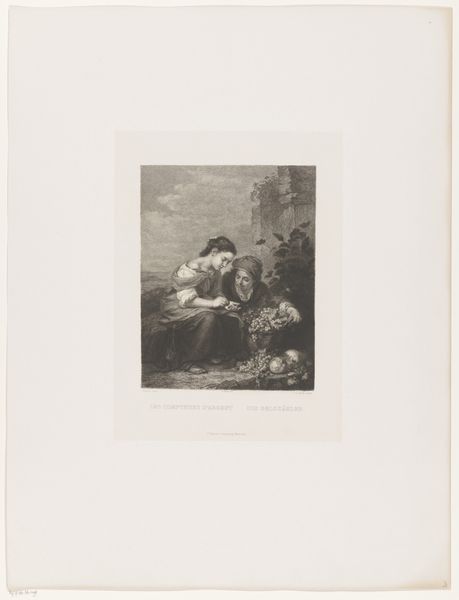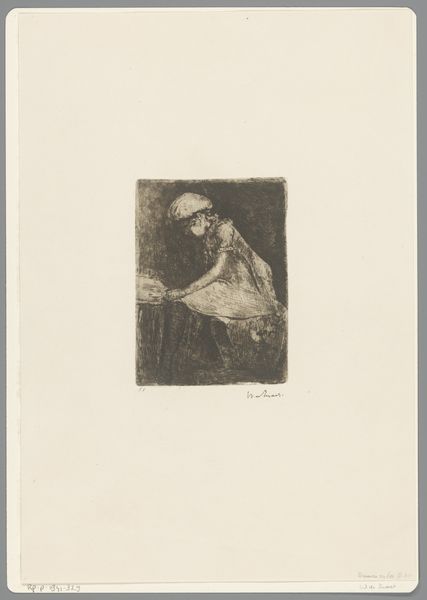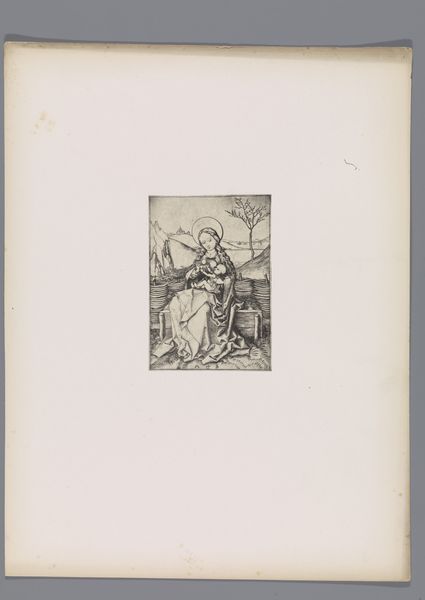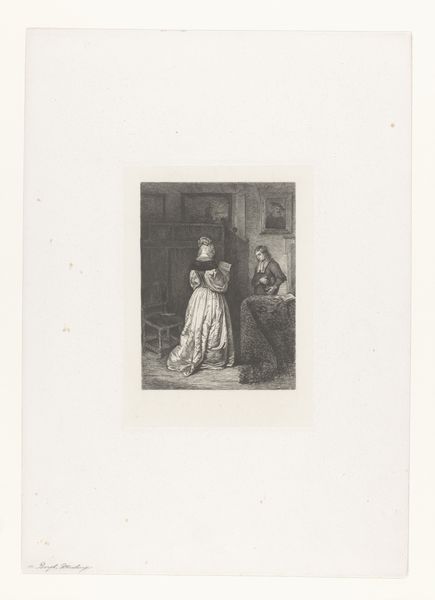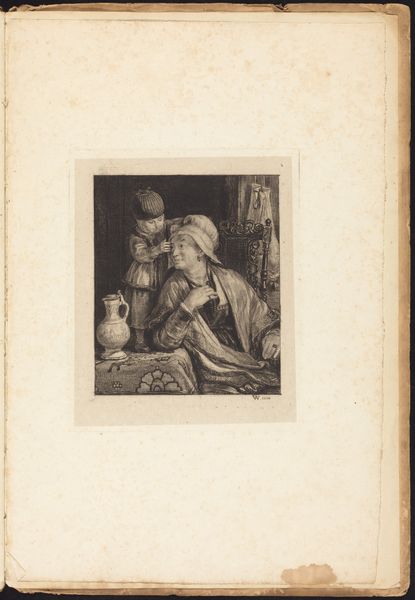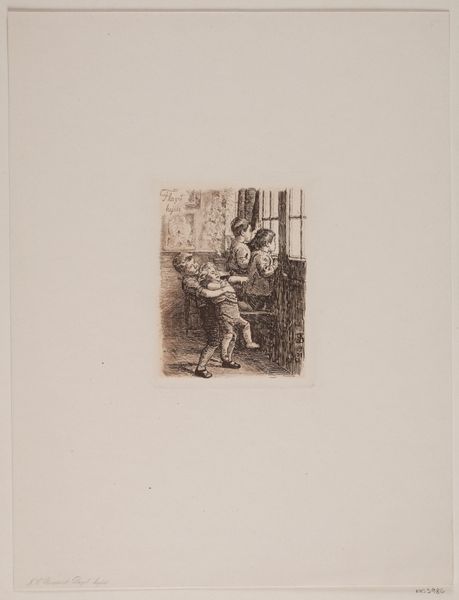
drawing, print, etching, paper
#
portrait
#
drawing
# print
#
etching
#
paper
#
genre-painting
#
academic-art
#
realism
#
monochrome
Dimensions: height 277 mm, width 200 mm
Copyright: Rijks Museum: Open Domain
Curator: This etching, “Two Singing Boys with a Lute,” likely made between 1847 and 1889, is by William Unger, currently residing here at the Rijksmuseum. It depicts two young fellows lost in song, or at least one lost in song while the other keeps pace. What's your take on their duet? Editor: Immediately, it feels a little staged, a captured moment perhaps more posed than genuinely intimate. The lighting and textures evoke something a bit more grandiose than their humble practice might warrant. Curator: It's true Unger comes from an academic tradition. The emphasis would be on idealized forms, balanced composition. Still, the setting isn't palatial; the boys seem common, focused. There's a social element to genre-painting, a kind of documentation. It offers a look into Dutch society at the time. Editor: Documentation, or perhaps a romanticized version thereof? Even in monochrome, there's an undeniable warmth emanating from their shared music-making. But I also wonder: Who is this art *for*? Does it genuinely reflect working-class lives or offer comfort and aesthetic pleasure to a more privileged class looking to peek into them? Curator: A vital point, one that highlights the relationship between art production, consumption, and power structures. Prints like this circulated widely, making art more accessible but also shaping perceptions and reinforcing societal norms. Genre painting frequently idealizes subjects, smoothing over rough edges, making working lives more picturesque for the consumer's gaze. It's also difficult for us today to discern the original source for the sketch since the sketch artist whose painting Unger transferred is currently unconfirmed. Editor: So the layers deepen—art serving power through accessibility while simultaneously veiling some truths in service of what sells. It speaks volumes about art's complicated role in society and culture—offering connection while possibly sustaining inequity. How fascinating. Curator: Exactly. What begins as a simple snapshot blossoms into an array of compelling inquiries around spectatorship, intention, and even beauty, wouldn't you say? Editor: Precisely why I continue coming to galleries. The longer you look, the further inward the rabbit hole plunges, always worth the wander and the consideration.
Comments
No comments
Be the first to comment and join the conversation on the ultimate creative platform.
